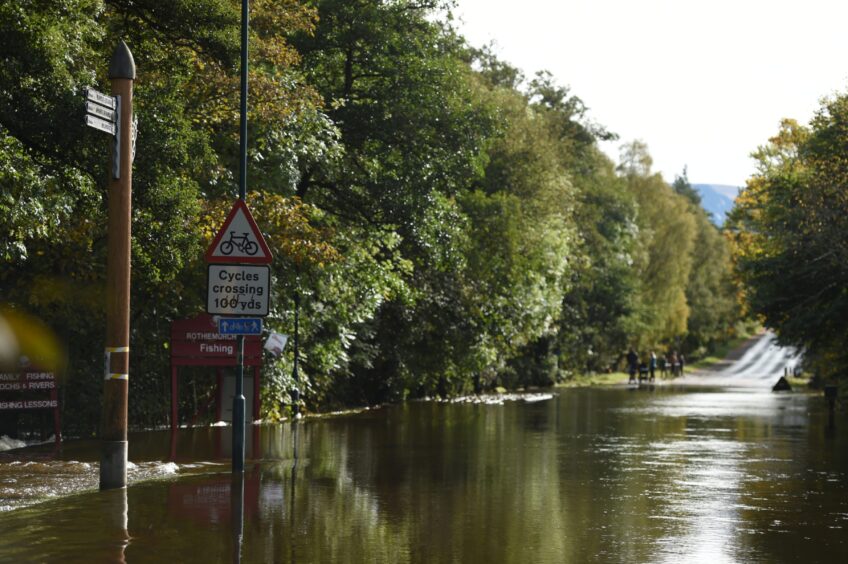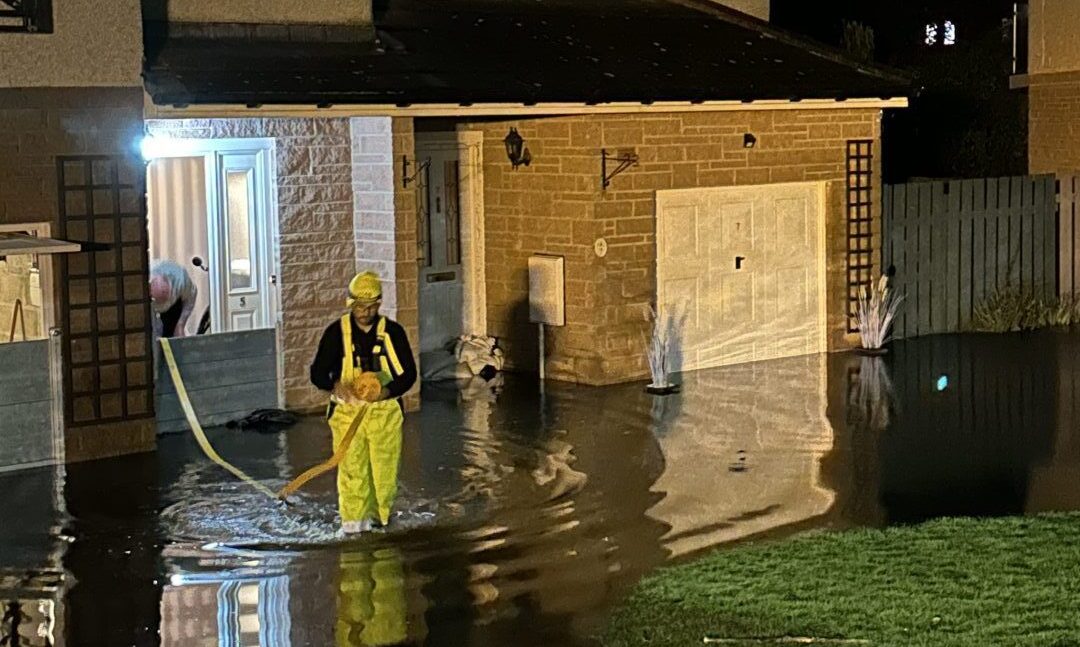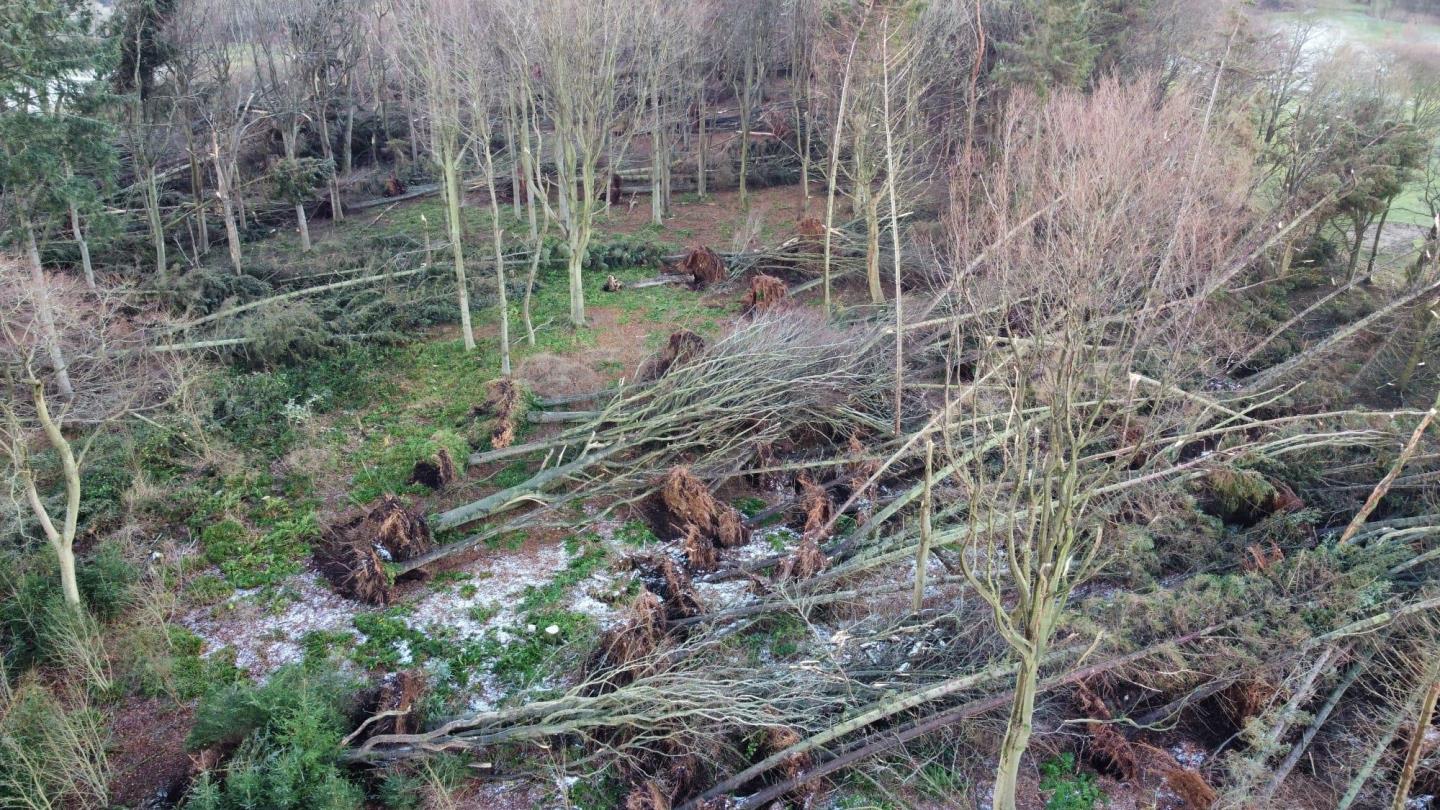
Babet. A short word with long-term consequences and massive devastation for those who suffered from the storm of that name.
As homes in Brechin, Montrose and across Angus were engulfed by floods, which forced residents to be evacuated from their properties, the scenes became horribly reminiscent of those when Storm Arwen hit Aberdeen and Aberdeenshire in 2021.
Babet, wreaked havoc and residents living in Brechin’s River Street were overwhelmed by heavy downpours which caused water levels to rise rapidly.
Respite centres were established throughout the town for individuals and families forced to leave their properties, but many of these people returned to find once-pristine floors and walls covered in mud and their possessions ravaged by the weather.
Fresh misery with Storm Ciaran
The First Minister, Humza Yousaf, who visited the site, admitted that it would take a long time for the clear-up to restore any semblance of normality. And that was even before Storm Ciaran sparked fresh misery.
Nor is there any prospect of these phenomena relenting in the future.
Indeed, according to some climate activists, they will grow in intensity. Sandbags, harbour walls and existing drainage systems will be inadequate in dealing with the consequences.
After all, when Storm Frank arrived in Scotland at the end of December 2015, it caused millions of pounds worth of damage and widescale devastation, sparking severe flooding all across the country with Deeside bearing the brunt of the impact.
These events are more common
The ensuing destruction was described as a one-in-500-year event, but politicians and the public appreciate they will have to grow accustomed to the elements causing greater problems, especially for coastal towns and villages.
Cross-party politicians agree that persisting with the status quo is not an option. Yet, with local authorities scrabbling for money and central government struggling to advance with major infrastructure projects, differences are obvious.
Lewis Macdonald, the former north-east Labour MSP, said: “There’s no question that flooding will happen more often and cause more damage in the years ahead, as the impact of climate change increases. In the meantime, Westminster and Holyrood have to recognise that flooding is a real and growing risk across Scotland and the UK.
There will be floods across Britain
“The next UK Government must work on the basis that there will be serious flood risks somewhere in Britain every winter for the foreseeable future, and put in place a Flood Resilience Taskforce to co-ordinate both flood prevention and responses to flooding by Westminster, Holyrood, local councils and the emergency services.
“The Scottish Government is responsible for many aspects of flood prevention. It should review planning guidelines, so that no more houses are built in low-lying riverside locations where the risk of flooding is rising exponentially.”
“Scottish Government Ministers must reverse the drastic cuts to police and fire service budgets: how are we to cope with flooding emergencies if Holyrood is cutting real-terms funding for emergency services?”
“And both Westminster and Holyrood have to get behind scientific research and local community initiatives to better manage river catchment areas, reduce the impact of flooding on farmland and find new ways to contain the impact of flooding.”
Climate change is real
Guy Ingerson, the co-convenor of Aberdeen and Aberdeenshire Greens, insisted it was overdue for people to accept that their lives are being transformed by the climate.
He told the Press & Journal: “More forward planning is needed at every level of government if we are to better protect our communities. The impacts of the climate emergency are becoming ever more severe.
“We have seen some progress, such as the flood defences in Stonehaven, but we need to see more of this. However, engineering solutions are only part of the equation.
“We also need to see more natural solutions. Restoring wetlands, peatlands, reforestation and more can help to both reduce our emissions and protect us from flooding, landslides and other things. The Nature Restoration Fund is making some headway, but I would like to see this scaled up further in the next Parliamentary term.
“Fundamentally, we need to start taking the climate crisis far more seriously.”
Bellwin scheme has been activated
The Scottish Government maintains it is doing everything it can to mitigate the misery.
On October 24, it activated the Bellwin Scheme, which exists to give special financial assistance to councils who face an undue financial burden as a result of large-scale emergencies. As of Friday, six local authorities had notified the Scottish Government of a potential claim, relating to the effects of Storm Babet.
Crisis grants are available from the Scottish Welfare Fund to families and people on low incomes, affected by flooding, and can be applied for through local councils.
In the bigger picture, the Scottish Flood Forum has formed close links with local communities and other recovery partners to devise plans for tackling future events.
Learn lessons from Storm Babet
Yet, Mairi McAllan, the Cabinet Secretary for Net Zero and Just Transition, has acknowledged that the recent spate of flooding sends out genuine distress signals.
She said: “Although no single storm event can be solely attributed to climate change, there is no denying that events like Storm Babet are becoming more frequent, intense and destructive due to the changing climate. We need to ensure that we learn the lessons from Storm Babet, particularly in terms of future weather modelling.
“We have committed an additional £150m over the course of this Parliament on top of the £42m provided annually to councils to increase flood resilience through the general capital grant. We are working with COSLA and local authorities to ensure this money is spent in the most effective way to improve flood resilience for communities.”
None of this, nor Ms McAllan’s announcement of a consultation on a flood resilience strategy for Scotland, offers any immediate respite to those unable to return to their homes until well into the New Year. And Liam Kerr, north-east Conservative MSP, argued that any such measures were simply placing greater pressure on councils.
He said: “As global temperatures increase and the weather becomes more unpredictable, public services are going to have to adapt. The game has changed significantly and the impact Storm Babet has had is a valuable reminder of that.
Local authorities don’t have the cash
“I look at Montrose, where shoreline is being lost so quickly, but it’s been left to the penniless council to come up with a multi-million-pound solution. I look at Brechin, where the threat was deemed a 1-in-200 situation just seven years ago. And I look at the toll Babet took on roads like the A90 and the submerged routes across the Mearns, where engineers will need weeks to fully estimate the damage.”
He added: “But because councils are so cut to the bone by the Scottish Government, the capacity to repair roads, clear drains and grit paths has been massively reduced.
“Climate change is arguably one of the biggest threats to humanity on the earth and it is changing our way of life. However, what is also changing rapidly is the resilience of councils to protect residents and property.”
In essence, many people realise that new weather patterns are developing and not for the better. But that’s coupled with the belief that the ability to deal with them is eroding at a faster rate, due to budget cuts.
As the old song had it: A hard rain’s gonna fall. And this might be only the beginning.






